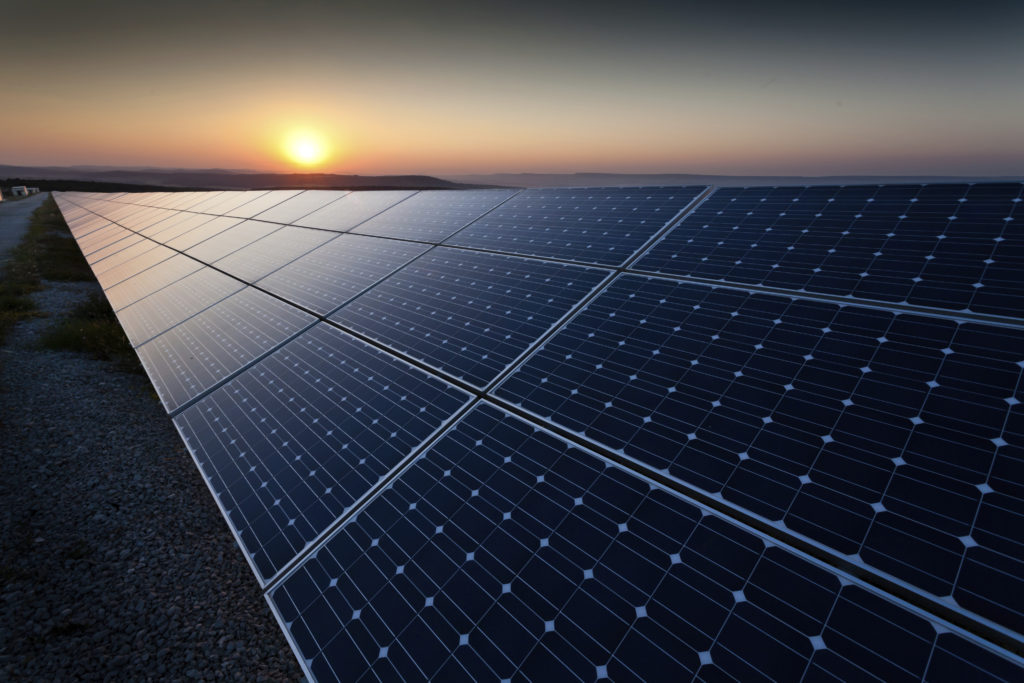As Solar Goes Mainstream, EPRI Expands Research Portfolio to Address Long-Term Issues
Solar photovoltaic (PV) energy is fast approaching a tipping point. Nationally, 29 states have renewable energy standards. Solar is a low-cost power source in a growing number of regions. These trends are driving utilities and corporate and retail customers to invest in, own, and operate solar plants.
To inform solar plant owners and operators in their efforts to reduce costs and enhance reliability, EPRI has broadened its solar generation research portfolio, including technology assessments, technical assistance for solar plants, demonstration projects, and best practices for a plant’s life cycle.
Short-Term Design, Long-Term Thinking
Companies seeking to purchase existing large-scale solar plants face a challenge. In the United States, independent power producers own about 90% of these facilities, and some were built as short-term investments—driven in part by federal tax credits requiring plants to be owned by a single entity for six years.
“Plants are expected to have lifetimes of more than 20 years. However, if the initial owners expect to sell the plants after 6 years, their design and procurement decisions might not consider the full lifetime of the plant,” said EPRI Senior Project Manager Michael Bolen. “EPRI recognizes the need to better understand the impacts of upfront decisions on long-term operations and maintenance.”
EPRI is developing best practices for PV plant specifications and commissioning, drawing on existing guidelines and input from subject matter experts and other stakeholders. For example, a recent EPRI study examined trade-offs associated with plant wiring. Power cable buried without conduit is cheaper but more prone to damage from animals, water infiltration, and other causes—and it costs more to diagnose problems, repair, and replace.

Monitoring and Maintenance
Upfront equipment choices, such as the type and quantity of sensors and inverters, impact plant monitoring and diagnosis capabilities. Advanced pattern recognition and other real-time monitoring systems often trigger alarms without adequate information about the causes of an excursion. There can be many false alarms. For technicians requiring hours to reach plants, it is necessary to dispatch them with the right information and equipment. EPRI is investigating the potential of advanced data analytics for solar plants. According to Bolen, emerging technologies may offer enhanced diagnostics, such as the ability to identify fault signatures and account for a plant’s power degradation over time.
For decades, EPRI has studied and fine-tuned maintenance practices for fossil plants and is now evaluating ways to apply tried-and-true practices at solar facilities. For example, the Equipment Reliability Framework directs fossil plant operators to identify critical equipment as the focus of preventive maintenance. Using this framework, EPRI identified the inverter as the most critical component in PV plants.
At an EPRI workshop later this year, participants will conduct a comprehensive analysis of potential component and system failures in PV plants along with causes and effects. EPRI will incorporate this information in its Preventive Maintenance Basis Database, a web-based tool that utilities and other solar plant owners can use to develop maintenance strategies for various components.
EPRI researchers are investigating other long-term considerations for large-scale solar plants, such as whether and when to replace old equipment with new technology, and decommissioning. Considering end-of-life issues during plant design is important for environmentally responsible electricity generation.
“To the greatest extent possible, PV modules and other solar equipment should be reused or recycled,” said Bolen. “When designing new plants or purchasing existing ones, it is important to think long-term and comprehensively.”
Understanding DC Arc Flashes
At solar power plants, arc flashes in high-power direct current (DC) equipment can present safety concerns and damage equipment. There is a safety standard for assessing arc flash hazards in alternating current (AC) equipment (IEEE 1584), but not one for DC systems—which include PV plants. As more PV plants, utility-scale batteries, electric vehicle charging stations, and other DC systems come online, there is an increasing need for such a standard. In a three-year, $1.1 million cooperative agreement with the U.S. Department of Energy, EPRI is researching arc flash mechanics in PV systems to quantify the hazards and develop safety recommendations for the electric power industry.
EPRI Technical Expert:
Michael Bolen
Additional Resources:
- Solar Power Fact Book, 8th Edition: Volume 1—Photovoltaics (PV)
- Instrumentation and Monitoring Guidelines for Utility-Scale PV Plants
- Thinking with the End in Mind: Linking PV Plant Design Considerations to O&M
- Reducing Risk, Increasing Life Cycle Value: Optimizing the Photovoltaic Plant Design and Development Process
- Comparison of Predicted, Expected, and Actual PV Plant Performance
- Budgeting for Solar PV Plant Operations and Maintenance: Practices and Pricing
- Utilizing Unmanned Aircraft Systems (UAS) as a PV O&M Tool


